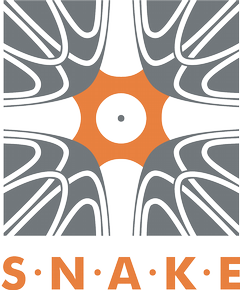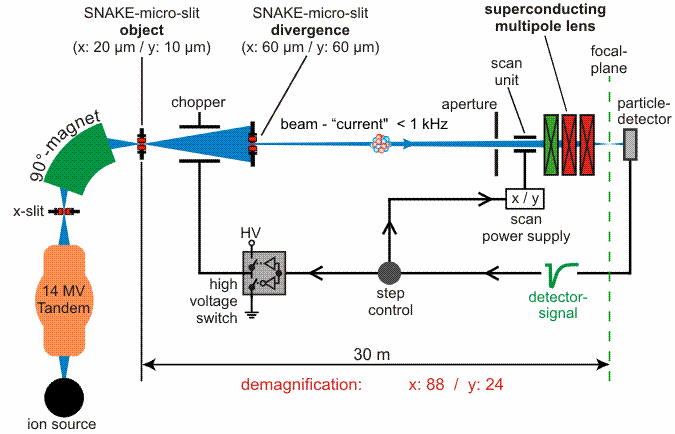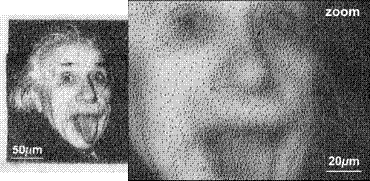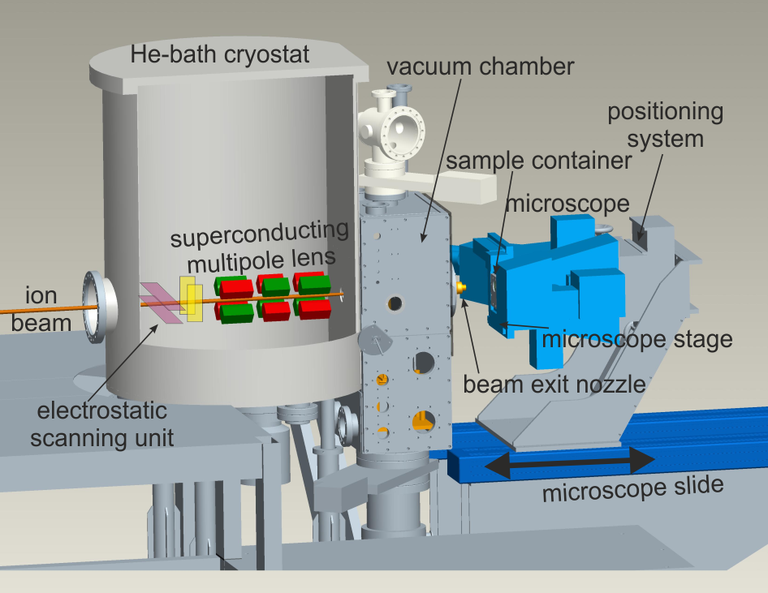SNAKE

The scanning ion microprobe SNAKE (superconducting nanoscope for applied nuclear (Kern-) physics experiments) which is installed at the 14MV Munich tandem accellerator enables to focus an ion beam to submicrometer size. Using specially designed object slits the ion beam can be cut down to approx. 20 µm diameter. With a triplett of superconducting multipole lenses, this object is then decreased by two or three magnitudes.
SNAKE facilitates the analysis of materials with common ion beam analytics with lateral resolution in the submicrometer range. Furthermore, hydrogen can be detected via proton proton scattering with thitherto unreached sensitivity and minimal radiation damage to the sample.
At the moment, SNAKE is primarily used in radiobiology. The submicrometer precise irradiation of living cells with single ions induces diverse damages in the DNA of the cells, among which double-strand breads (DSB) are the most fatal. To the DSB, a number of repair proteins attach in clusters (so-called foci), which can be made visible in fixated cells via immunofluorescence. The microscopic images can be evaluated qualitatively and quantitatively to analyze the dynamics and kinetics of the proteins as well as the damaged DNA itself. The live-cell microscopy set-up installed at the irradiation site even allows to observe and monitor the changes in the cells online.
One major component of the ion microprobe consists of a specially designed micro-slit system which defines the object for the ion optical transformation as well as the divergence of the ion beam. During cell irradiation experiments with single ions this slit system exhibits a very low transmission of less than 10-8 (i.e. only one particle in 100 millions can pass the slit system). The ion beam prepared in such a manner then is focussed by the superconducting multipole lens to the focal plane. Thus SNAKE generates an ion beam spot with a lateral extension of less than 0.5 µm (FWHM). In order to move the beam focus over the irradiation sample an electrostatic scan unit is mounted in front of the superconducting lens. In addition to the heavy beam reduction by the slit system a fast beam on-off-switch (chopper) with a response time of about 1 µs is installed. In combination with a particle detector irradiations with single ion hits can be performed.

The irradiation of so called nuclear track detectors (here: polycarbonate foils) has been established for the verification of targeted irradiations with single ions. After an etching process the hits of single ions form cone-shaped cavities in the detector which are visible as dark spots in the optical microscope. With the combination of ion beam scanning and preparation of single ions one can irradiate complex patterns resp. pictures. The figure on the left side shows an example that was irradiated by more than 40000 12C ions with a particle energy of 55 MeV. In the magnified view single ion hits become clearly visible.

In order to irradiate living cells in the same manner with the focussed ion beam an irradiation setup was installed following the superconducting lens of SNAKE (see figure 3). As the handling of the cells is only possible under atmospheric pressure the ion beam has to leave the vacuum of the beam line system. This takes place at the end of the exit nozzle through a bore of 1 mm in diameter which is vacuum-sealed by a 7.5 µm thick Kapton foil (exit window). A flexible coupling permits that the exit nozzle can be moved in all three directions in space. Thus cell samples can be changed and the exit window adjusted. The optical characterisation of the ion beam as well as the positioning of the samples is done using an inverted optical microscope which is integrated into the irradiation setup. In order to handle the living cells these are grown on a 6 µm thick Mylar foil in specially designed containers. During irradiation the cell containers are mounted at the adjustable table of the optical microscope. The design of the containers allows the transmission of the energetic ions to the scintillation detector that is situated on the lens turret of the optical microscope.
